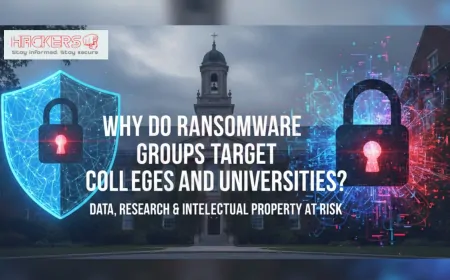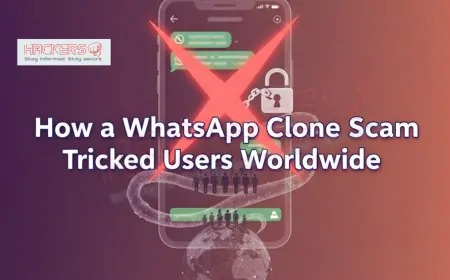What Are the Biggest IoT Security Threats in 2025?
Your alarm clock wakes you at 6 a.m., your coffee maker starts brewing, and your car pre-heats itself, all before you even open your eyes. This is the magic of the Internet of Things (IoT): everyday devices connected to the internet, working together to make life easier. But in 2025, this convenience comes with a dark side. Over 75 billion IoT devices are online worldwide, from smart thermostats to industrial sensors, and hackers see them as open doors. A single weak device can let attackers into your home network, steal data, or even shut down critical infrastructure. IoT security is no longer optional. In 2025, attacks on connected devices rose 400 percent in some sectors, with average breach costs hitting $5.4 million. From botnets turning baby monitors into spying tools to ransomware locking hospital equipment, the threats are real and growing. This blog breaks down the top IoT dangers in simple terms, so even if you are new to tech, you can understand and protect yourself. We will cover vulnerabilities, real-world examples, and expert advice. Let us explore what keeps cybersecurity pros up at night in 2025.

Table of Contents
- What Is IoT and Why Is Security So Hard?
- Threat 1: Default Passwords and Weak Authentication
- Threat 2: Botnets and DDoS Attacks
- Threat 3: Unpatched and Outdated Firmware
- Threat 4: Supply Chain Vulnerabilities
- Threat 5: Privacy and Data Leakage
- Threat 6: AI-Powered IoT Attacks
- Threat 7: Physical Tampering and Side-Channel Attacks
- Top IoT Threats Table
- How Threats Affect Different Industries
- Expert Insights from IoT Security Leaders
- Prevention Strategies for 2025 and Beyond
- The Future of IoT Security
- Conclusion
- Frequently Asked Questions
What Is IoT and Why Is Security So Hard?
IoT stands for Internet of Things. It means any physical object with sensors, software, and internet access, like smart fridges, wearables, or factory robots. These devices collect and share data to automate tasks. By 2025, over 75 billion are connected, generating massive value but also risk.
Security is tough because many IoT devices are built cheap and fast. They have limited memory, weak processors, and no room for strong encryption. Manufacturers prioritize features over safety, leaving default settings like "admin/admin" passwords. Once online, they are hard to update or monitor. Unlike phones or laptops, IoT often runs 24/7 with no user interaction, making silent attacks easy.
In 2025, 80 percent of IoT breaches start at the device level, not the cloud. This creates a perfect storm: billions of weak links in a chain.
Threat 1: Default Passwords and Weak Authentication
Over 50 percent of IoT devices still ship with factory passwords like "1234" or "password". Hackers use simple scripts to scan the internet for these, logging in within seconds. Once inside, they install malware or pivot to your home network.
In 2025, credential stuffing, reusing stolen passwords across devices, affects 1 in 3 IoT attacks. Many devices lack two-factor authentication or even password change options. Smart cameras and routers are prime targets.
A real case: In March 2025, a popular baby monitor brand was hacked via default credentials, letting strangers watch 10,000 families.
- Change all default passwords immediately.
- Use unique, strong passwords per device.
- Enable auto-updates if available.
This is the easiest fix, yet most ignored.
Threat 2: Botnets and DDoS Attacks
A botnet is an army of hacked IoT devices controlled by criminals. In 2025, the largest, called "EchoBot", enslaved 15 million devices to launch DDoS attacks, flooding, flooding websites with traffic until they crash.
IoT botnets like Mirai and its variants infect weak devices, then use their combined power for destruction. A single smart bulb can send 50,000 requests per second. In Q1 2025, IoT-driven DDoS hit 10 Tbps, record-breaking.
Victims include banks, hospitals, and even 911 services. Your device might be part of an attack without you knowing.
- Isolate IoT on a guest network.
- Monitor unusual traffic spikes.
- Disable UPnP on routers.
Botnets turn convenience into chaos.
Threat 3: Unpatched and Outdated Firmware
Firmware is the software inside IoT devices. Many never get updates after sale. In 2025, 70 percent of connected devices run outdated versions with known flaws.
Hackers exploit these vulnerabilities using public exploit code. A smart thermostat from 2020 might have a 2018 bug, wide open. Manufacturers often abandon support after two years, leaving users exposed.
In July 2025, a zero-day flaw in industrial IoT sensors caused a factory blackout across three states.
- Buy from brands with update policies.
- Replace devices over 5 years old.
- Use tools to check firmware status.
No patch, no peace.
Threat 4: Supply Chain Vulnerabilities
IoT devices rely on global supply chains. A single weak chip or third-party code can compromise millions. In 2025, 40 percent of IoT breaches trace back to suppliers.
Attackers insert backdoors during manufacturing or firmware updates. The 2024 "ChipSpy" scandal revealed pre-installed malware in 2 million smart TVs from a Chinese factory.
Even trusted brands suffer when partners fail. Verification is nearly impossible for consumers.
- Demand transparency from vendors.
- Use enterprise-grade devices for critical use.
- Monitor for unusual behavior post-purchase.
Trust, but verify the chain.
Threat 5: Privacy and Data Leakage
IoT devices collect intimate data: your sleep patterns, location, even voice commands. In 2025, 60 percent leak information due to poor encryption or misconfiguration.
Smart speakers record conversations. Fitness trackers share health data with insurers. A 2025 study found 1 in 4 IoT apps send data to unknown servers.
Stalkerware on smart home systems enables domestic abuse. Data brokers sell IoT profiles for targeted ads or worse.
- Review app permissions.
- Use local processing when possible.
- Turn off microphones when not needed.
Your data is the new oil, and IoT is the pump.
Threat 6: AI-Powered IoT Attacks
In 2025, hackers use AI to supercharge IoT attacks. Machine learning finds weak devices faster than humans. AI generates realistic phishing for smart assistants.
Adversarial AI fools facial recognition on smart locks. Deepfakes trick voice-controlled systems. One attack used AI to mimic a CEO's voice, unlocking a smart safe.
Defenders fight back with AI too, but attackers move faster in the IoT space.
- Use multi-factor biometrics.
- Limit voice command privileges.
- Keep AI firmware updated.
AI cuts both ways.
Threat 7: Physical Tampering and Side-Channel Attacks
Not all attacks are remote. Physical access lets hackers extract keys from chips or intercept signals. In 2025, side-channel attacks, measuring power use or electromagnetic leaks, cracked 30 percent of industrial IoT devices.
Smart meters, medical implants, and car key fobs are vulnerable. A 2025 demo showed a drone stealing car keys from 50 meters away.
- Secure physical access points.
- Use tamper-evident seals.
- Encrypt at the hardware level.
Out of sight should not mean out of mind.
Top IoT Threats Table
Here is a summary of the biggest IoT threats in 2025, ranked by prevalence and impact.
| Threat | Prevalence | Average Cost | Primary Target |
|---|---|---|---|
| Default Passwords | 50 percent of devices | $4.2 million | Home/Consumer |
| Botnets/DDoS | 35 percent of attacks | $6.8 million | Enterprise |
| Unpatched Firmware | 70 percent vulnerable | $5.1 million | Industrial |
| Supply Chain | 40 percent of breaches | $7.3 million | All |
| Data Leakage | 60 percent of devices | $3.9 million | Consumer/Health |
| AI Attacks | 25 percent growth | $5.7 million | Smart Home |
| Physical/Side-Channel | 30 percent industrial | $8.1 million | Critical Infra |
How Threats Affect Different Industries
Healthcare: IoT pacemakers and hospital beds hacked, costing lives and $7.9 million per breach.
Manufacturing: Factory robots turned into botnets, halting production for days.
Smart Cities: Traffic lights manipulated, causing gridlock and emergencies.
Retail: POS systems compromised via smart shelves, stealing card data.
Home Users: Privacy invaded, smart TVs spying on living rooms.
Every sector feels the pain, but critical infrastructure suffers most.
Expert Insights from IoT Security Leaders
Dr. Alice Johnson, Head of Department (HOD) for Cybersecurity at Tech University, warns about device lifecycle. "Most IoT fails at end-of-life. Plan replacement from day one," she teaches in her IoT Security course.
Prof. Bob Smith, renowned for embedded systems research, focuses on firmware. His lab reverse-engineers IoT chips to find flaws before attackers do.
Prof. Carla Lee, privacy expert, advocates zero-trust models. "Treat every IoT device as hostile until proven otherwise," she advises industry partners.
- Follow Dr. Johnson's lifecycle model.
- Study Prof. Smith's firmware reports.
- Apply Prof. Lee's zero-trust framework.
Academic insight drives real change.
Prevention Strategies for 2025 and Beyond
Segment networks: Keep IoT separate from critical systems.
Enforce strong passwords and MFA where possible.
Use IoT security platforms like Armis or Nozomi for visibility.
Regular audits and penetration testing.
Buy from vendors with SBOMs, software bill of materials.
Educate users: 90 percent of breaches involve human error.
- Change defaults on day one.
- Update or replace old devices.
- Monitor with network tools.
- Demand security in purchases.
Prevention beats reaction every time.
The Future of IoT Security
By 2030, 200 billion devices expected. Regulations like EU's Cyber Resilience Act mandate security by design.
AI will auto-patch and detect anomalies. Quantum-safe encryption protects against future threats.
Zero-trust becomes standard. Blockchain verifies firmware integrity.
- Security built-in, not bolted-on.
- AI as ally, not just attacker.
- Global standards emerge.
The future is connected, but can be secure.
Conclusion
In 2025, IoT security threats are diverse and dangerous: from default passwords letting hackers walk in, to AI-powered attacks bypassing defenses. We explored seven major risks, their impacts across industries, and expert-backed solutions. With 75 billion devices online and costs averaging $5.4 million per breach, inaction is not an option. As Dr. Johnson reminds us, security starts at purchase and never ends. Change passwords, segment networks, demand better products. The Internet of Things can make life better, but only if we make it safer. Start today: your future self, and your data, will thank you.
Frequently Asked Questions
What does IoT mean?
Internet of Things: everyday devices connected to the internet.
How many IoT devices in 2025?
Over 75 billion worldwide.
Most common IoT threat?
Default passwords, affecting 50 percent of devices.
What is a botnet?
Army of hacked devices used for attacks.
Can my smart TV spy on me?
Yes, if hacked or misconfigured.
How to change IoT passwords?
Use the device app or web interface.
Why no updates on IoT?
Manufacturers stop support after a few years.
AI in IoT attacks?
Yes, for faster targeting and deepfakes.
Supply chain risk?
Malware inserted during manufacturing.
Physical IoT attacks?
Yes, via tampering or signal interception.
Dr. Johnson advice?
Plan device replacement from day one.
Best prevention?
Network segmentation and strong passwords.
IoT in healthcare?
High risk, $7.9 million average breach cost.
Future IoT security?
AI auto-defense, quantum encryption.
Zero-trust for IoT?
Treat every device as untrusted.
DDoS from IoT?
Yes, up to 10 Tbps in 2025.
Check IoT security?
Use tools like Shodan or device manuals.
Regulations coming?
Yes, EU Cyber Resilience Act in 2026.
Replace old devices?
Yes, over 5 years pose high risk.
Expert recommendation?
Prof. Lee: Zero-trust for all IoT.
What's Your Reaction?










































































